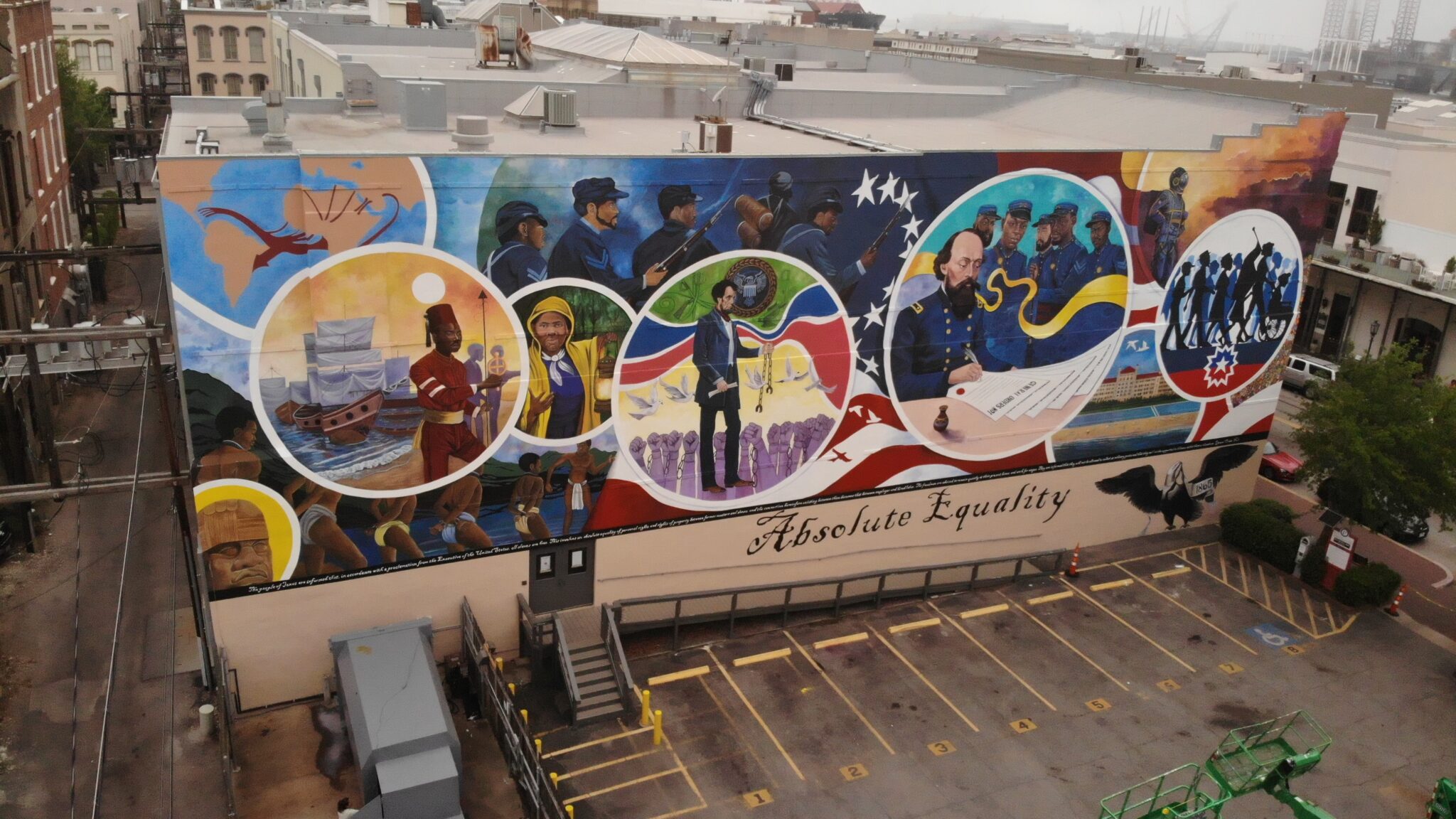A Visit to Galveston, the Birthplace of Juneteenth
Galveston #Galveston

The summer calendar has a new national holiday this year. A celebration born and bred in Texas, it is one that not everyone is familiar with given that it was only signed into law last year by President Joe Biden.
To understand Juneteenth, one must visit Galveston, its birthplace.
It was in Galveston that, in June 1865, General Gordon Granger of the Union Army arrived with a force of more than 2,000 troops, many of them Black. From his headquarters at what is now the corner of 22nd Street and Strand Street, he informed the people of Texas of Executive Order No. 3, which declared that all enslaved people in the Lone Star State, approximately 250,000, were now free.
It was two and a half years after Abraham Lincoln had issued the Emancipation Proclamation and two months after the Civil War had ended at Appomattox. Texas was the last state to receive the message.
“The people of Texas are informed that, in accordance with a proclamation from the Executive of the United States, all slaves are free,” Order No. 3 read. “This involves an absolute equality of personal rights and rights of property between former masters and slaves, and the connection heretofore existing between them becomes that between employer and hired labor.”
“The Black people on the island chose this date as their freedom date and celebrated it annually for generations,” said Samuel Collins III, a historian and tourist ambassador for Galveston. “As they moved off the island, across Texas, and around the country, they took Juneteenth celebrations with them.”
In 1980, Texas was the first state to make Juneteenth a state holiday. Eventually, 46 other states followed before it became a federal holiday.
“Human beings, regardless of their race, want to live their lives without restriction,” Collins added. “Juneteenth is about a spirit of renewal that celebrates freedom and opportunity.”
Collins foresees Juneteenth becoming the beginning of what we, as a nation, will call “the freedom season” the way Thanksgiving marks the beginning of the holiday season. Culminating 15 days later, on July 4, Independence Day, the freedom season allows Americans to celebrate the continuing evolution of our country into a more perfect Union.
On the “hallowed ground” where General Granger proclaimed Executive Order No. 3 today stands a massive mural—126 ft long and 38 ft tall—called “Absolute Equality.” Dedicated in 2021, the 5,000-square foot mural was designed and constructed by Houston-based artist Reginald Adams—the largest of the hundreds he has created in his 30-year career.
“I was really ignorant about Juneteenth until I started this project,” he said. “I just thought Juneteenth was the day enslaved people realized they had been emancipated, but there’s so much more to the story.”
Adams seeks to explain that story in six rings, each depicting a portion of the freedom story for Black Americans. From the first enslaved person to arrive in Texas in 1528 to the life of 95-year-old Opal Lee, the Fort Worth woman recognized as the “grandmother of Juneteenth,” each ring moves along the path to freedom. Adams and his team of five artists painted QR codes in each ring, which bring up videos that explain the event depicted in greater detail. Some videos are two or three minutes; some are up to 10 minutes.
 “Absolute Freedom” at the corner of 22nd Street and Strand Street in Galveston. Courtesy of Reginald Adams
“Absolute Freedom” at the corner of 22nd Street and Strand Street in Galveston. Courtesy of Reginald Adams
At the beginning of the mural to the left, Adams painted a map of the world as it looked in the 1500s when trans-Atlantic exploration resulted in the African slave trade.
On the right side, an astronaut stares out into space. A nod to Texas’ role in space exploration, this image should spur thought about what freedom and equality will look like in the future.
Adams notes that he has an error in the largest of the rings, the one depicting General Granger signing Order No. 3.
“I later learned that Order No. 3 was actually signed by General William Emory in New Orleans,” Adams said. “Granger and his troops were responsible for reading the executive order aloud and enforcing it, but he never signed it.”
“Absolute Equality” is the first of five steps along the Galveston Freedom Walk that helps explain this historic period. The tour begins at Pier 21 and the Middle Passage, where a marker commemorates enslaved Africans in Galveston during the 1700s and 1800s. After a stop at “Absolute Equality,” the tour goes on to the U.S. Customs House, where the order was read; Reedy Chapel-AME Church, where a notice was posted; and Aston Villa, another place where the order was read aloud.
The building on which the mural appears houses the Juneteenth Legacy Project and Nia Cultural Center (“nia” means “purpose” in Swahili).
A permanent collection of African Art showcases the art, language, and culture of the African peoples that existed before they were enslaved. Youth art auctions happen there` four times a year.
The center currently includes an emotional and thought-provoking exhibit of 60 pieces by Houston artist Ted Ellis that documents the African American journey to freedom in Texas. Some of the work is brutally painful yet accurate in its portrayal of slavery in Texas; others are joyful and hopeful.
Galveston is the first stop on the Emancipation Trail, which extends 51 miles to Houston, marking the path some formerly enslaved people walked to share the news of their freedom. Currently, it includes 40 sites, ending at Freedmen’s Town in what is now Houston’s Third Ward.
The National Park Service is currently conducting a study to consider designating it a National Historic Trail. Texas Senator John Cornyn and Representative Sheila Jackson Lee worked together to create the Emancipation National Historic Trail Study Act and move it through